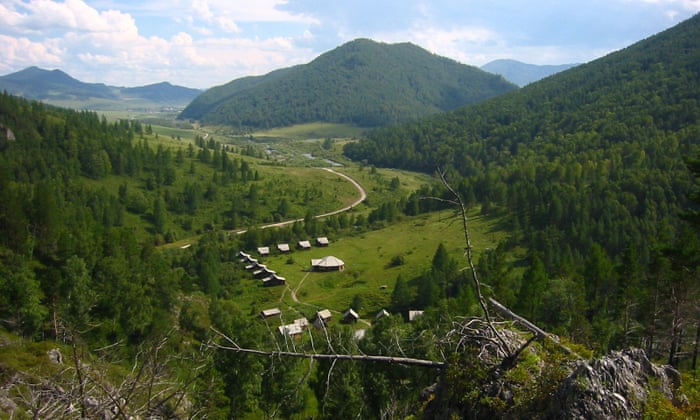In a groundbreaking discovery, scientists have unearthed the first known hybrid human, a teenage girl from over 50,000 years ago.
Found in Denisova Cave in Siberia, Denisova 11, as she’s known, had a Neanderthal mother and a Denisovan father, marking an extraordinary find in the field of ancient DNA studies.
The Discovery of Denisova 11
The Unearthing of a Hybrid

The remains of Denisova 11 were discovered in the East Chamber of Denisova Cave, Russia.
This girl, who died over 50,000 years ago, was identified through ancient DNA analysis.
A tiny piece of her bone was pulverized, and the DNA extracted and sequenced, revealing her mixed heritage.
This meticulous analysis showed that Denisova 11 had a Neanderthal mother and a Denisovan father.
“Her genetic traits could only be explained if her mother was a Neanderthal and her father was a Denisovan,” the study noted, offering an unprecedented glimpse into the intermingling of these ancient species.
Ancient DNA Analysis

To determine Denisova 11’s ancestry, scientists pulverized a small bone fragment, extracting and sequencing its DNA.
This sequence was compared to samples from Neanderthals, modern humans, and Denisovans.
The results were clear: Denisova 11 was a first-generation hybrid.
This discovery, published in Nature, was significant not just for its revelation of hybrid ancestry but also for what it suggested about ancient human migrations and interactions.
It posed new questions about how Neanderthals and Denisovans might have met and mingled.
Understanding Neanderthals and Denisovans
Neanderthals: The Skilled Hunters

Neanderthals, known scientifically as Homo neanderthalensis, lived throughout Europe and Western Asia until about 30,000 years ago.
They were adept hunters and tool-makers, surviving three glacial periods and thriving in various ecological zones.
Their extensive geographical range and adaptability were remarkable.
However, archaeological evidence suggests Neanderthals were not keen on long-distance movement, preferring to stay within territories that met their daily needs.
Denisovans: The Mysterious Relatives

In contrast, Denisovans are shrouded in mystery.
Only a few tiny bone fragments and teeth have been found, primarily in Denisova Cave.
Despite the limited fossil record, Denisovan DNA has left a significant legacy in modern humans, especially in populations in Oceania and Asia.
Up to 6% of the genes in modern New Guineans and 3-5% in Aboriginal Australians are Denisovan in origin.
Additionally, a gene aiding Tibetan high-altitude survival is believed to have been inherited from Denisovans, underscoring their impact on human evolution.
The Life of Denisova 11
A Glimpse into Her World

While we know a lot about Denisova 11’s ancestry, details about her life remain sparse.
The small piece of bone found doesn’t tell us how she died or whether she suffered from any illnesses or injuries.
Yet, it offers a tantalizing glimpse into a world long past.
Denisova 11 lived in Denisova Cave, a site that has housed Denisovans, Neanderthals, and modern humans over thousands of years.
This location, rich in archaeological significance, continues to provide insights into ancient human life and interactions.
Family and Community
Denisova 11’s parents’ union is a testament to the intermingling of different human species.
This discovery challenges previous notions about ancient human groups and their interactions.
It raises intriguing questions about how a Neanderthal woman and a Denisovan man might have met.
Such interbreeding indicates significant movement among these groups, especially since Denisova 11’s DNA showed closer connections to Neanderthals from Western Europe rather than those from her home region, suggesting a broader range of mobility than previously thought.
Broader Implications of the Discovery
Human Migration and Interaction
The genetic evidence from Denisova 11 suggests that ancient humans were more mobile and interconnected than previously believed.
Her mixed heritage indicates significant movement and interaction between Neanderthal groups in Western Europe and Denisovans in Siberia.
This discovery highlights the complexity of ancient human migrations and the mingling that occurred when different groups met.
It opens new avenues for research into how these interactions shaped the genetic landscape of modern human populations.
Technological Advances in Fossil Analysis

The discovery of Denisova 11 wouldn’t have been possible without advanced DNA analysis techniques.
One such technology, Zooarchaeology by Mass Spectrometry (ZooMS), played a crucial role in identifying bone fragments at Denisova Cave.
ZooMS, developed by Mike Buckley at Manchester University, reads the collagen in bones like a molecular barcode, differentiating between species.
This technique allowed researchers to identify human bones among thousands of animal fragments, a breakthrough in fossil analysis.
The Genetic Legacy of Ancient Hybrids
Denisovan DNA in Modern Populations

Denisovan DNA has left a lasting impact on modern human populations.
For instance, up to 6% of the genes in modern New Guineans and 3-5% in Aboriginal Australians come from Denisovans.
These genetic markers provide insights into ancient human migrations and interactions.
Moreover, the gene enabling Tibetans to thrive at high altitudes is believed to have been inherited from Denisovans, showcasing the significant influence of these ancient peoples on modern human adaptations and survival.
Unanswered Questions and Ongoing Mysteries
Despite these discoveries, many questions remain about Denisovans.
Researchers are still piecing together their physical appearance, lifestyle, and why they went extinct.
The Finder Project, led by Katerina Douka, aims to uncover more about these enigmatic ancestors.
The project’s goal is to find more Denisovan fossils and determine their distribution, interaction with other species, and evolutionary history.
Collaborations with international researchers and the use of advanced technologies like ZooMS are crucial in this endeavor.
Conclusion
The discovery of Denisova 11 has revolutionized our understanding of ancient human species and their interactions.
This first-known hybrid human offers invaluable insights into the mingling of Neanderthals and Denisovans, highlighting the complexity of human evolution.
As research continues, we can expect to learn even more about our ancient ancestors and the genetic legacies they left behind.
The work of scientists like those involved in the Finder Project will undoubtedly shed further light on the fascinating history of human evolution.

